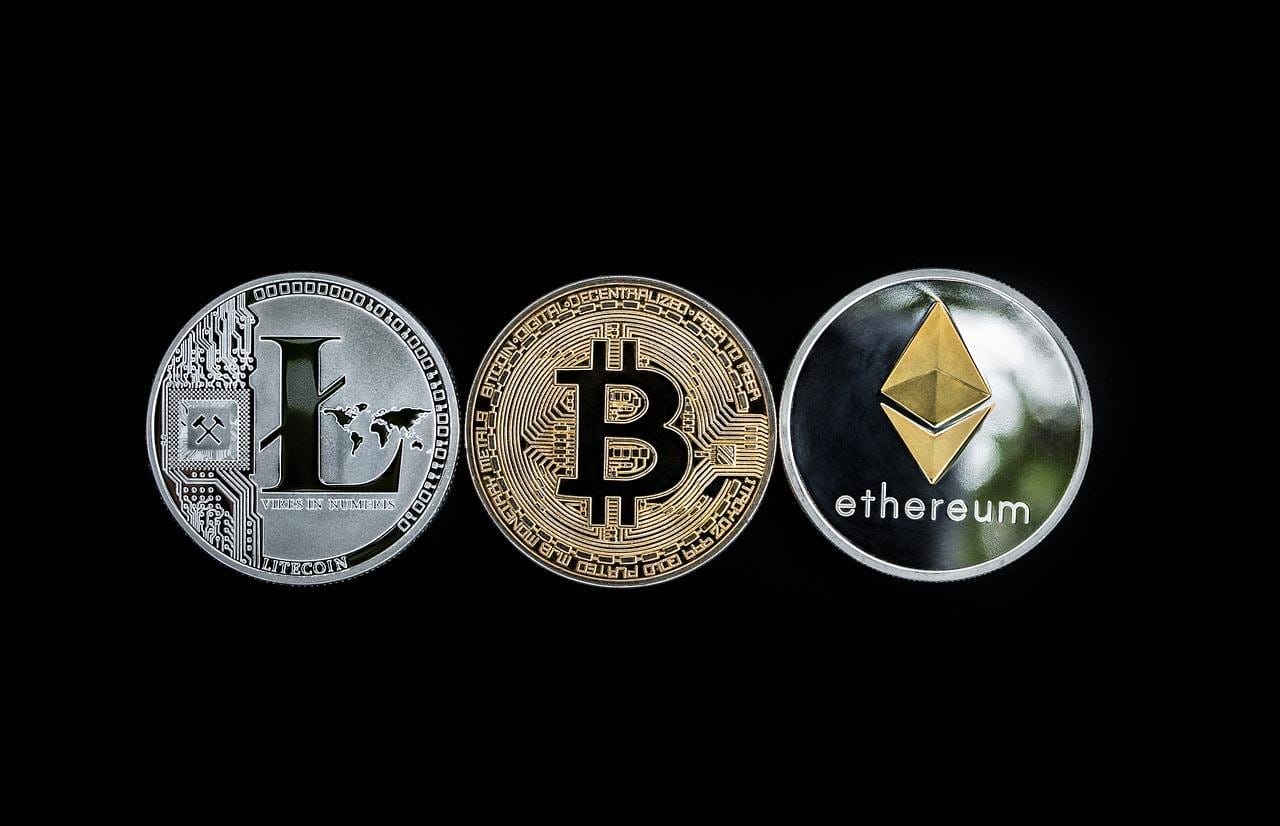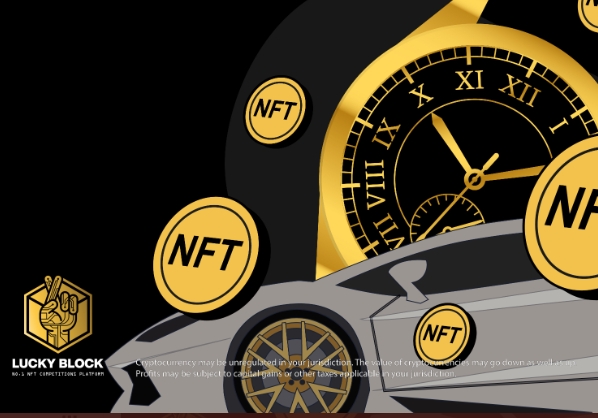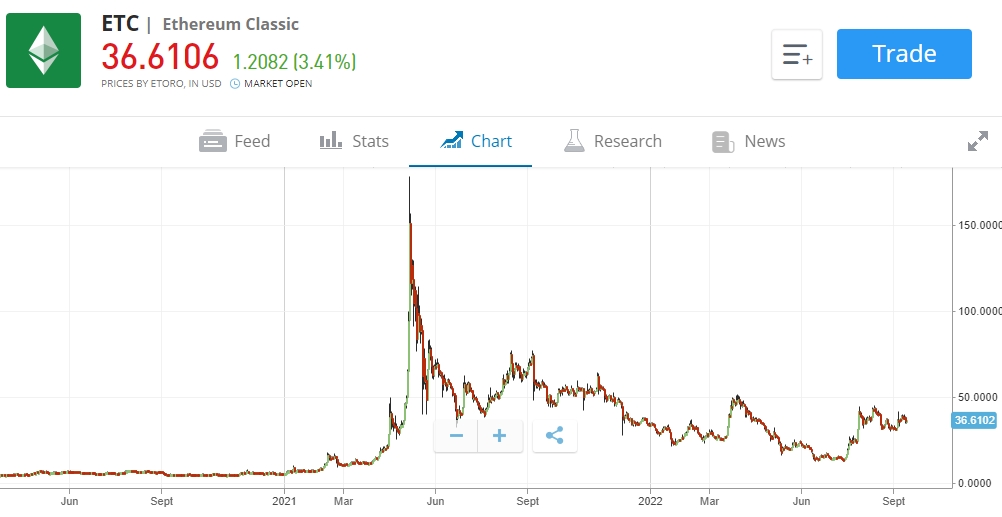10 Best Proof of Work Cryptocurrency to Invest in 2024

The blockchain contains a consensus mechanism to ensure crypto payments aren’t duplicated. The two major consensus methods are known as ‘proof of work’ (PoW) and ‘proof of stake’ (PoS). Bitcoin and the best proof of work coins use the original consensus mechanism – we’ve reviewed them and highlighted their benefits below. This guide also details what proof of work is, how it differs from proof of stake and why PoW coins may be a good investment.
The 10 Best Proof Of Work Cryptos to Buy in 2024
Here’s a quick look at the best proof of work coins before we get into their detailed reviews:
- Bitcoin Minetrix (BTCMTX) – This new cryptocurrency aims to make Bitcoin and crypto token mining simpler and more efficient by tokenizing cloud mining. The next best alternative investment to proof of work coins, this stake-to-mine mechanism offers high staking rewards and is soaring on presale.
- Tamadoge (TAMA) – Proof Of Work Crypto Meme Coin with P2E Elements
- Battle Infinity (IBAT) – Popular Metaverse P2E Gaming Platform
- Lucky Block (LBLOCK) – Top-Rated NFT Competition Platform
- Litecoin (LTC) – Bitcoin Fork Offering Near-Instant Transfers
- Bitcoin Cash (BCH) – Efficient and Affordable Bitcoin Alternative Platform
- Ethereum Classic (ETC) – Ethereum Fork Running Smart Contracts and Apps
- Bitcoin (BTC) – Highest Market-Cap Crypto and Original Proof of Work Coin
- Zcash (ZEC) – Cryptography Platform Providing Enhanced Privacy
Reviews of Top Proof of Work Coins to Invest in
We researched 10 of the best proof of work coins, and our detailed reviews and analysis of each including how they may benefit investors can be found below.
1. Bitcoin Minetrix (BTCMTX) – Stake-to-Mine Crypto Offering Bitcoin Cloud Mining Power, Presale is Soaring
We recommend Bitcoin Minetrix ($BTCMTX) as the next best alternative to proof of work coins. The aim of Bitcoin Minetrix is to make cloud mining a cheaper and more transparent process for everyday people.
Bitcoin Minetrix will introduce a unique stake-to-mine mechanism through which $BTCMTX token holders can stake their holdings and earn tokenized cloud mining credits. Mining Bitcoin directly requires high investments in advanced equipment and hardware. Therefore, Bitcoin Minetrix will let users access rented equipment from third parties.
By staking the tokens on an Ethereum-powered smart contract, investors can generate cloud mining credits. These credits can be burned on the ecosystem to earn Bitcoin cloud mining power. This is used to get allocated mining times through which one can earn a portion of the mining revenues.
Thus, the entry barrier is reduced, and investors have complete control over their holdings. From a maximum supply of 4 billion, 2.8 billion $BTCMTX tokens have been allocated for the ongoing presale. The presale will consist of 39 rounds.

In only two weeks, Bitcoin Minetrix has raised over $10 million on presale. The platform aims to generate a hard cap of $33.46 million by the end of the presale. While $BTCMTX is currently priced at $0.0132 per token, the price will increase at each successive stage. To learn more about this new cryptocurrency project, go through the Bitcoin Minetrix whitepaper and join the Telegram channel.
| Presale Started | 26 Sept 2023 |
| Purchase Methods | ETH, USDT, BNB |
| Chain | Ethereum |
| Min Investment | $10 |
| Max Investment | None |
2. Tamadoge (TAMA) – Proof Of Work Crypto Meme Coin with P2E Elements
Tamadoge is a new meme coin offering high utility and rewards. This P2E game enables players to compete for crypto rewards by looking after virtual pets. Players who nurture their pets into adulthood the best climb the leaderboard to collect free crypto.
As well as rewarding players with TAMA tokens the Tamadoge platform has a multi-year roadmap to offer a better crypto gaming experience and more opportunities to earn. Two of the developments in 2023 are a Tamadoge P2E Arcade game, offering physical Tamadoge rewards and token prizes, and the augmented reality app — making player/pet interaction more realistic.

The other development is the token burn. TAMA tokens are already limited to a fixed maximum supply of 2 billion, and the game’s developers will burn 5% of all tokens received from transaction fees in the pet store purchases. That will decrease the coin’s supply over time, and the increased exposure after its exchange listing on OKX will raise demand, making it one of the best cryptos to buy and hold for the long term.
TAMA’s exchange listings have become convenient thanks to its ERC-20 token and proof of work mechanism that will be used for verifying its transactions once the presale ends. Tamadoge already had one of the best crypto presales of 2022, selling $19 million of tokens in just eight weeks.

Investors can stay up to date with the coin’s latest developments by subscribing to the Tamadoge Telegram channel. Bear in mind that the channel’s admins never DM subscribers first, so watch out for imposters.
3. Battle Infinity (IBAT) – Popular Metaverse P2E Gaming Platform
Battle Infinity has become one of the most popular P2E Metaverse games, enabling players to receive rewards from six platforms. Players can buy the native token, IBAT, on Battle Swap, a decentralized exchange on the platform, to build up teams and compete in the IBAT Premier League.
The game enables players to buy NFTs in Battle Marketplace to use as fashion accessories on their avatars. Players can also stylize their characters with unique hairstyles and use them to explore the Metaverse in Battle Arena while interacting with players in real time.

One of the ways players earn IBAT tokens is by monetizing their land. Another way is by staking their coins. Players can choose solo, duo and crates staking. Battle Infinity also rewards the most active players from the global staking pool, which receives half of the transaction fees on the platform.
IBAT’s presale was scheduled to last 90 days, but high demand for the coin resulted in it selling out within 25 days. During the presale, IBAT was available for $0.0015. The coin’s popularity was evident in the exchange listing, as IBAT’s price surged 700%, proving it’s one of the fastest growing cryptocurrency to invest in.

The game’s developers wanted to facilitate efficient and low-cost transactions, so they developed a BEP-20 token. Although Battle Infinity uses a proof of stake consensus mechanism, its platform offers investors several ways to earn rewards and potentially profit from price pumps when listed on new exchanges. Investors can stay informed about Battle Infinity’s developments by joining the Telegram channel.
4. Lucky Block (LBLOCK) – Top-Rated NFT Competition Platform
One of the most popular proof of work cryptos is LBLOCK. Initially, the project created a BEP-20 token enabling investors to earn rewards but also incur sales tax. Lucky Block developed LBLOCK V2, an ERC-20 token containing no sales tax and enabling centralized exchange listings.
Major exchanges LBank and MEXC have listed LBLOCK. The most recent listing was Gate.io on 1 September 2022. This coin’s history proved that its price pumps during new listings. Lucky Block CEO Scott Ryder announced that more exchanges will also list the coin.

Another key announcement was the token burn. To make the coin more valuable, Ryder stated a 1% monthly token burn will commence on 30 September 2022. Lucky Block has partnered with exciting Web3.0 projects, which it will announce soon. Besides the potential capital appreciation, Lucky Block enables investors to enter prize draws.
Investors enter the draws by owning LBLOCK and accessing the Platinum Rollers Club NFT to stand a chance of winning a Lamborghini, $1 million in Bitcoin and a house worth $1 million. Transaction fees don’t apply to buying coins for draws.

Lucky Block started as a prize-giveaway platform offering exotic vacations and has progressed to an NFT competition platform giving away major prizes and offering two tokens, proving it’s one of the best long term crypto projects.
5. Litecoin (LTC) – Bitcoin Fork Offering Near-Instant Transfers
Litecoin is one of the oldest cryptocurrencies, released in 2011 by its creator, Charlie Lee. The platform developed as a Bitcoin fork after Lee noticed that Bitcoin’s transactions were hefty and slow. That resulted in the development of a Bitcoin alternative, an open source, global payment network that provides instant, near-zero cost payments globally. Litecoin’s network handles a higher transaction volume than Bitcoin because of more frequent block generation.

Litecoin is software that enables users to run, modify, copy and distribute it. The platform’s use of proof of work means anyone with sufficient hardware can add blocks to its blockchain. Individuals verifying transactions are referred to as miners, who are rewarded 12.5 LTC per block.
Its halving occurs every 840,000 blocks (approximately every 4 years), resulting in the network producing 84 million LTCs. Since the crypto community deems Litecoin as a Bitcoin alternative, it’s potentially one of the best altcoins to buy.
6. Bitcoin Cash (BCH) – Efficient and Affordable Bitcoin Alternative Platform
Bitcoin Cash is also a fork of Bitcoin and dubbed the Bitcoin ‘Peer to Peer Electronic Cash’. While Bitcoin is regarded as gold 2.0 and a store of value, Bitcoin Cash would be a credit card used for everyday transacting. The Bitcoin fork increased the size of the blocks, enabling Bitcoin Cash to handle a larger volume of transactions and improve scalability.

Much like Litecoin, Bitcoin Cash was developed to offer faster and cheaper transactions. Its network operates without congestion, and transactions are confirmed within minutes. It costs mere pennies to send BCH globally and offers several levels of privacy. Bitcoin Cash uses the proof of work algorithm to timestamp new blocks.
The project used the same mining algorithm as Bitcoin, known as Emergency Difficulty Adjustment (EDA) — adjusting difficulty every 2016 blocks. The platform has revised its EDA algorithm to make it more convenient for miners to earn BCH.
7. Ethereum Classic (ETC) – Ethereum Fork Running Smart Contracts and Apps
The hard fork of Ethereum’s network resulted in the separation of two blockchains and the formation of Ethereum Classic. ETC’s technology differs from Ethereum’s and is capable of running a wide variety of applications. ETC powers transactions and smart contracts on its platform and is also rewarded to miners for solving proof of work puzzles by verifying transactions. Unlike Ethereum, Ethereum Classic is committed to using proof of work indefinitely.

The project insists that proof of work is the true consensus mechanism, providing censorship resistance. Ethereum Classic developers also believe that projects migrating to proof of stake are financially motivated and don’t do it because of environmental concerns.
Ethereum Classic acknowledges that proof of work isn’t a perfect system and is subject to 51% attacks. But its chains have functioned resiliently for over 10 years and prioritize critical qualities providing blockchain utility.
8. Bitcoin (BTC) – Highest Market-Cap Crypto and Original Proof of Work Coin
Bitcoin’s epic rallies have made it one of the top trending cryptos. It’s the first coin to take off in a bull run and pave the way for altcoins. BTC is the most popular crypto and has the largest market cap in the digital asset market. Bitcoin is the first crypto developed to use the proof of work consensus mechanism. The effectiveness of Bitcoin’s use of proof work hasn’t deteriorated throughout the years, regardless of the BTC price. But it requires special hardware and relies on microprocessors.

By using proof of work since 2009, Bitcoin has provided a borderless, decentralized currency enabling peer-to-peer transactions at any time. According to popular Bitcoin price predictions, BTC is expected to reach its ATH of $68k by 2025.
9. Zcash (ZEC) – Cryptography Platform Providing Enhanced Privacy
Although blockchain provides a decentralized platform, most of its transactions are public. Since discretion is important to investors, privacy coins such as Zcash have become popular. A key feature of Zcash is the privacy aspect, but it also provides fast transactions at low costs. The platform offers shielded transactions and keeps the user’s financial information confidential.

It’s the first project to use zk-SNARKs, a form of zero-knowledge cryptography, providing the highest level of privacy. Although Zcash transactions are on the blockchain, it hides key personal information such as the user’s wallet address and the amount of funds transferred. Zcash secures its network by using proof of work mining algorithm, then rewards miners for the computation of each block with Zcash tokens and fees for transactions added to the block.
What Defines Proof of Work Crypto?
Cryptocurrency projects can choose between proof of work and proof of stake consensus mechanisms. Every transaction on the blockchain needs to be verified to avoid duplication and to ensure legitimate transactions. A consensus mechanism acts as a system that connects all networks to ensure transaction legitimacy. It could be referred to as the central authority for transaction verification and as means for different stakeholders to agree to a transaction.
Proof of work is the original crypto consensus mechanism and requires a tremendous amount of processing power. Bitcoin, the first crypto to use proof of work, has received significant criticism for using a lot of energy consumption for mining.

Virtual miners secure and verify proof of work blockchains by solving a math equation and receive token rewards for successful completion.
The Difference Between Proof of Work and Proof of Stake
Proof of work blockchain is regarded as the true consensus mechanism maintaining a secure decentralized blockchain by converting electricity into security. Using proof of work is an energy-intensive exercise, and it can struggle to process a large number of transactions that busy networks generate.
It is prone to 51% of attacks on the blockchain. To provide blockchain users with a safer, more efficient alternative, proof of stake was developed. Proof of stake doesn’t convert energy into security. Instead, it requires crypto holders to lock up their assets so that blocks can be added. In exchange for locking up their coins, stakers receive more tokens as rewards.

A key reason crypto projects use proof of stake instead of proof of work is environmentalism. Proof of stake has been marketed as a secure verification method without vast energy consumption. Excessive electricity use isn’t required, unlike proof of work. One of the main differences between these two consensus mechanisms is penalties for network disruptions and bad actors. Miners using proof of work are penalized the sunk cost of energy and computing power for submitting incorrect information. With proof of stake, validators have their funds reduced for accepting a bad block.
Are Proof of Work Cryptos a Worthwhile Investment?
Some of the most volatile cryptos use proof of work as a consensus mechanism. Yet, proof of work cryptocurrencies provide investors several benefits.
Proven to Work
Bitcoin is the first crypto that used proof of work for secure transaction verification and still does to this day. Proof of work has been around for more than 10 years and hosts the biggest crypto coins such as Ethereum Classic, Bitcoin Cash and Zcash. Because it’s been around since day one, proof of work is a more trusted mechanism than new methods claiming to be better alternatives. Its longevity has made it the perfect option for long term crypto projects.
Mining Rewards
Proof of work requires individuals to verify transactions. They are called miners, who use high-powered hardware and consume high levels of energy to solve a math puzzle. Once they’ve solved it accurately and added a block, they receive rewards in the form of the network’s coin.
Decentralization
Miners are located globally and don’t require a third party such as an exchange to receive rewards. Using proof of work, instead of proof of stake, enables the user to maintain more control of the processing on blockchain, and it cuts out the middle man.
How to Invest in Proof of Work Cryptocurrencies
Investors can use the step-by-step guide below to learn how to buy Bitcoin Minetrix right now.
- Step 1: Create a Crypto Wallet – Before it’s possible to participate in the Bitcoin Minetrix presale, a crypto wallet is required. While there are hundreds of options to choose from, in our experience, MetaMask is great for desktop users while Trust Wallet is commonly considered the superior choice for mobile investors.
- Step 2: Buy USDT or ETH – After setting up a crypto wallet, it’s time to fund it. Both USDT and ETH can be used to purchase BTCMTX, meaning it’s up to the investor to decide which better suits them. However, it’s worth noting that ETH will always be needed for gas fees.
- Step 3: Purchase BTCMTX – Lastly, head over to the Bitcoin Minetrix presale website and connect the newly created crypto wallet. Following that, use the ‘Buy Now’ button to open the purchase menu, decide how many tokens to buy, and confirm the transaction.
Conclusion
Our proof of work cryptocurrency list consists of nine of the best coins. While all the PoW cryptos can be a good investment opportunity, Bitcoin Minetrix is is at the top of our list. This cryptocurrency offers tokenized cloud mining credits to $BTCMTX investors. Bitcoin Minetrix has raised over $10 million since the start of the presale.
FAQ
Which coins are proof of work?
The main coin using the proof of work consensus mechanism is Bitcoin. Other popular projects that also use proof of work are Bitcoin Cash, Ethereum Classic and Zcash.
What coins besides Bitcoin are proof of work crypto?
Bitcoin is the original proof of work crypto, and many popular projects decided to use proof of work because of it. Some of those projects are Zcash, Bitcoin Cash and Ethereum Classic.
Does Ethereum use proof of work?
Ethereum used proof of work until the Ethereum Merge, which is the migration to proof of stake. However, Ethereum Classic plans to use proof of work indefinitely.
Does XRP use proof of work?
No, XRP doesn’t use proof of work to validate transactions. Ripple uses a consensus protocol for verifying transactions, and participants know and trust each other.
What proof of work crypto is the best?
After comparing all the best proof of work coins, we found that Bitcoin Minetrix is a top investment option. Bitcoin Minetrix has raised over $10 million on presale – and offers tokenized cloud mining credits.
About Cryptonews
At Cryptonews, we aim to provide a comprehensive and objective perspective on the cryptocurrency market, empowering our readers to make informed decisions in this ever-evolving landscape.
Our editorial team, comprised of more than 20 professionals in the crypto space, works diligently to uphold the highest standards of journalism and ethics. We follow strict editorial guidelines to ensure the integrity and credibility of our content.
Whether you’re seeking breaking news, expert opinions, educational resources, or market insights, Cryptonews.com is your go-to destination for all things crypto since 2017.







 Sergio Zammit
Sergio Zammit 
 Kane Pepi
Kane Pepi 

 Eric Huffman
Eric Huffman